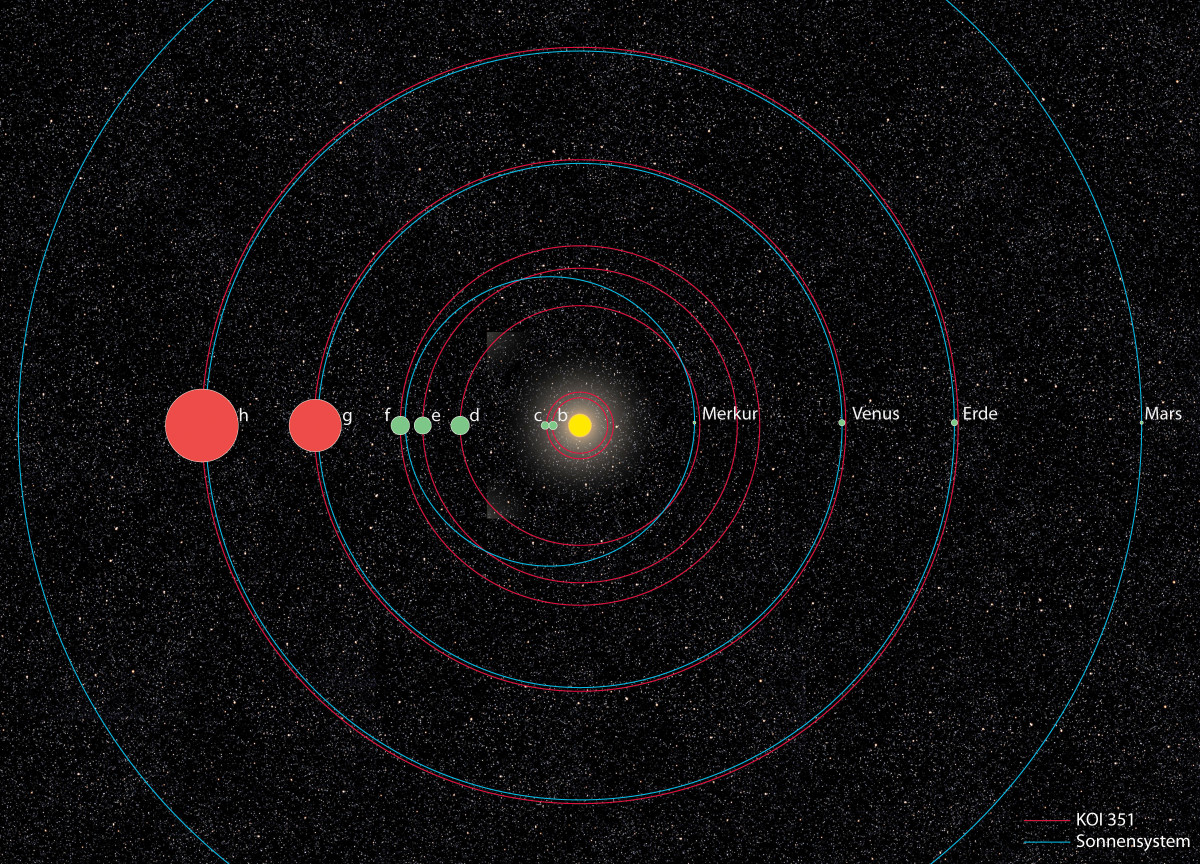Germans: ‘We’ve found second solar system’
This sounds like something from a
science fiction comic when I was young, back in the days when Dan Dare was with
Spacefleet, which was effectively the RAF in Space before the Russians and
Americans took over.
However, this bit of news is quite contemporary.
According to one of my favourite online newspapers*, a team of German scientists
claim to have discovered a “second solar system” made up of seven planets
orbiting a star similar to our own.
The astrophysicists at the German Aerospace
Centre (DLR or Deutsches
Zentrum für Luft- und Raumfahrt) said on Monday they had discovered “the
most extensive planetary system to date.”
They have found seven planets
circling a star called KOI-351 – more than in other known planetary
systems.
A statement on the DLR’s website said the planets were arranged
in a similar fashion to our solar system with smaller rocky planets near the
star and giant gas planets further away. “Although the planetary system around
KOI-351 is packed together more tightly, it provides an interesting comparison
to our cosmic home.”
They believe the discovery is a “major step” towards
the search for a star system similar to our own.
The star was selected
from a vast list, the Kepler Input
Catalog (or KIC) which is a publicly searchable database of roughly 13.2
million targets From these are selected Kepler Objects of
Interest (KOI) to be studied by the Kepler spacecraft,
a good proportion of which go on to become Kepler numbered stars as in the
present case, where the star system is known as the Kepler-90 system. (To
confuse matters, some planets such as Kepler-78b were detected
previously by other projects and don’t have a KOI number. However, their
planets are then studied further by the Kepler spacecraft.)
And this is
the system in question:
The team is led by Juan Cabrera,
an astrophysicist at the DLR Institute of Planetary Research in
Berlin-Adlershof. They emphasize the similarities between KOI-351 and our solar
system.
“No other planetary system shows such a similar ‘architecture’ to
that of our cosmic home as does the planetary system around KOI-351,” Cabrera
said.“Just as in the solar system, rocky planets with roughly the size of Earth
are found close to the star, while, ‘gas giants’ similar to Jupiter and Saturn
are found as you move away from the star.”
“We cannot stress just how
important this discovery is. It is a big step in the search for a ‘twin’ to the
Solar System, and thus also in finding a second Earth,” he added.
Heike
Rauer, head of the extrasolar planets and atmospheres working group at the DLR,
said: “The discovery of this complex planetary system helps us to better
understand the processes that give rise to such planetary systems,” and Tilman
Spohn, head of the institute, added: “DLR is proud to have made a significant
contribution to the discovery of new planetary systems.”
Here are the
planets discovered, tabulated:
|
The Kepler-90 system | |||
|
Companion |
Orbital radius (AU) |
Orbital period (days) |
Planetary Radius (Earth=1) |
|
b |
0.074 |
7 |
1.31 |
|
c |
0.089 |
9 |
1.19 |
|
d |
0.32 |
60 |
2.88 |
|
e |
0.42 |
92 |
2.67 |
|
f |
0.48 |
125 |
2.89 |
|
g |
0.71 |
211 |
8.13 |
|
h |
1.01 |
332 |
11.32 |
However
Before you all go rushing off to
the interstellar estate agent, it pays to read the brochure more carefully, by
studying the table above.
Yes, the star itself is, as stars go, quite
like the Sun, and the outermost planet is a gas giant sitting at the same radius
as the Earth’s orbit. Not that one would want to live on or in a gas giant, but
it might have a nice habitable moon.
And let us look at the “small
print”, the parameters of the star itself.
It has a mass
1.13 times that of the Sun, so that automatically leads one to expect that it is
likely to be hotter, unless it’s a very young star. But we do not even have that
uncertainty; more precisely to the point, its radius is 1.2 Solar, so it will
present to its planet 1.44 times the radiative area of our own solar disc. And at a
temperature of 5930 K, the surface will be somewhat brighter, raising its total
heat output to about 60% higher than that of the Sun. Our own Sun is slowly and
inexorably getting brighter, and it is predicted by that by the time the Sun
gets that hot, Earth would have undergone the “big boil”, whereby most of the
oceans would have gone well over what under the Earth’s present atmospheric pressure is the boiling point of
water.
And what’s more, there appear to be no known planets further out
that one could move to if things get really too hot. So one would find oneself
like so many retired British expats, who have sold up here for a home in the
sun, only to find themselves falling foul of local laws and
corruption.
*www.thelocal.de, from
which one gets news items like this: Bionic
tortoise on a roll with Lego wheel



Comments